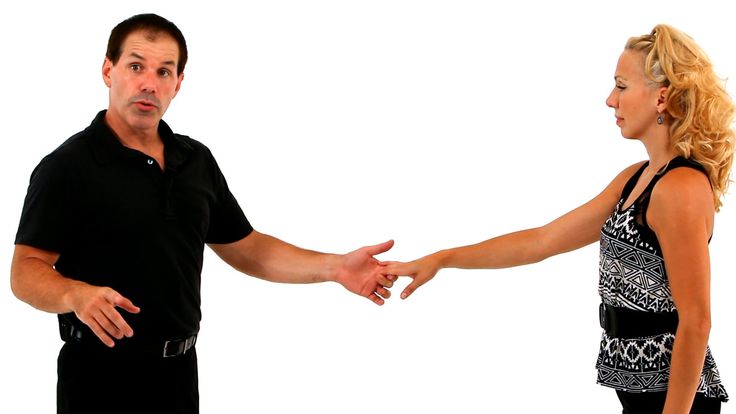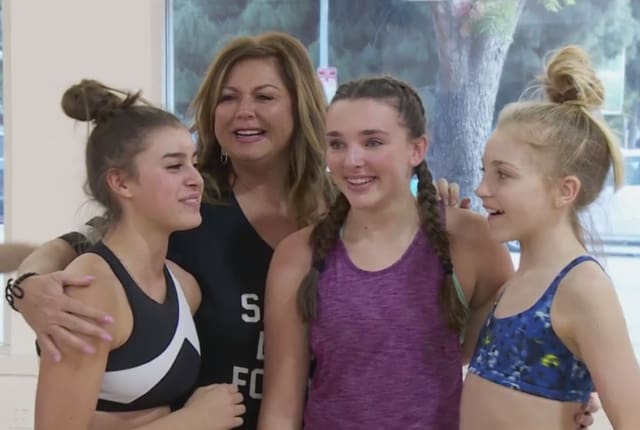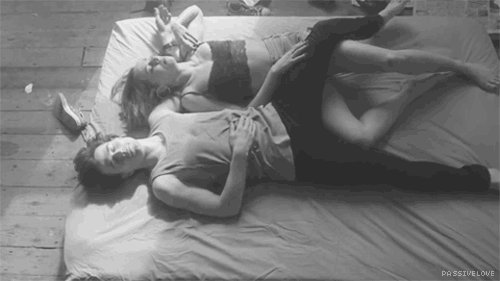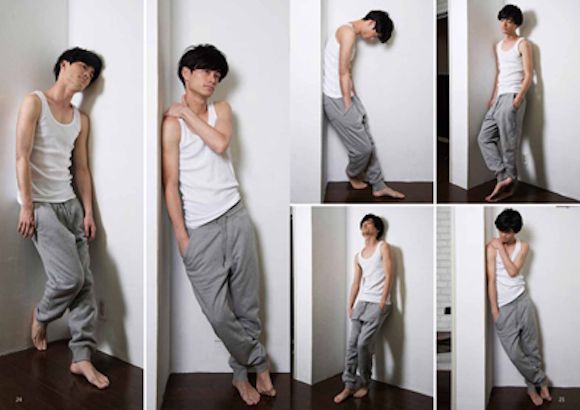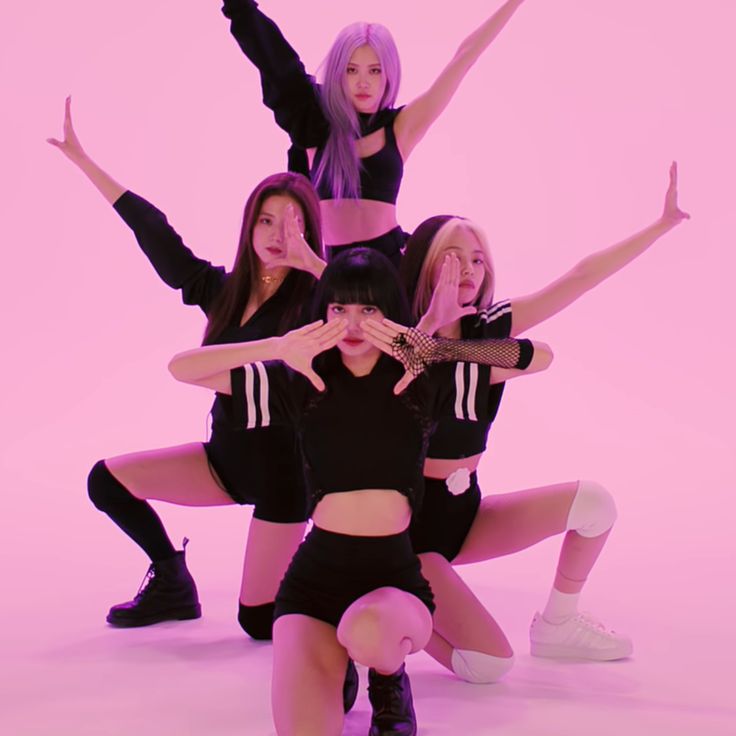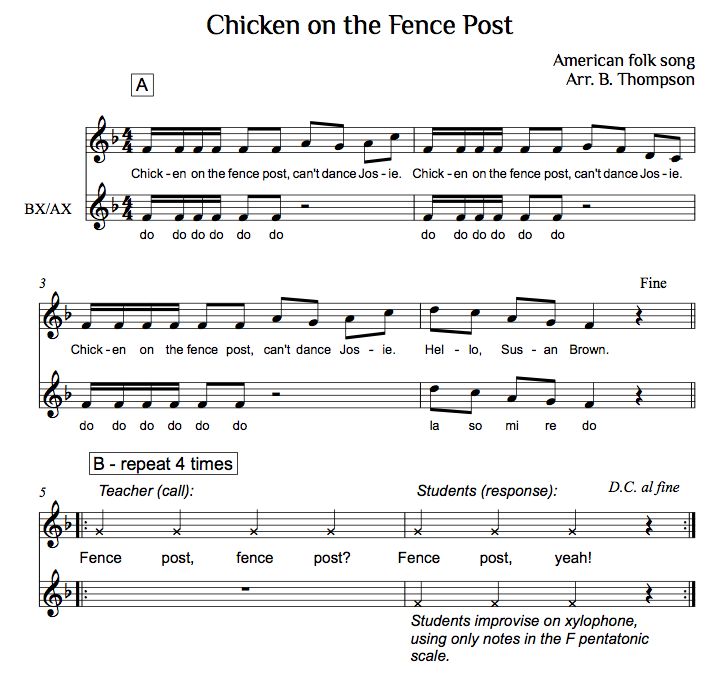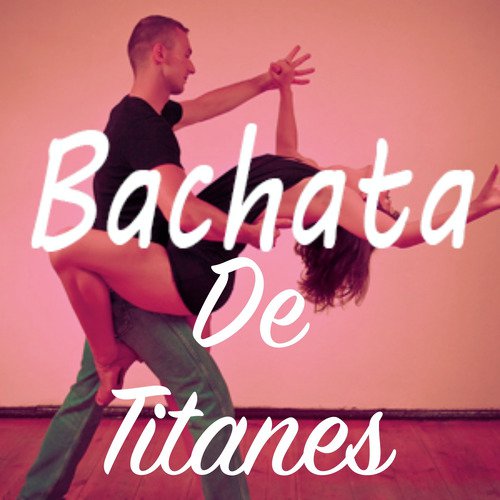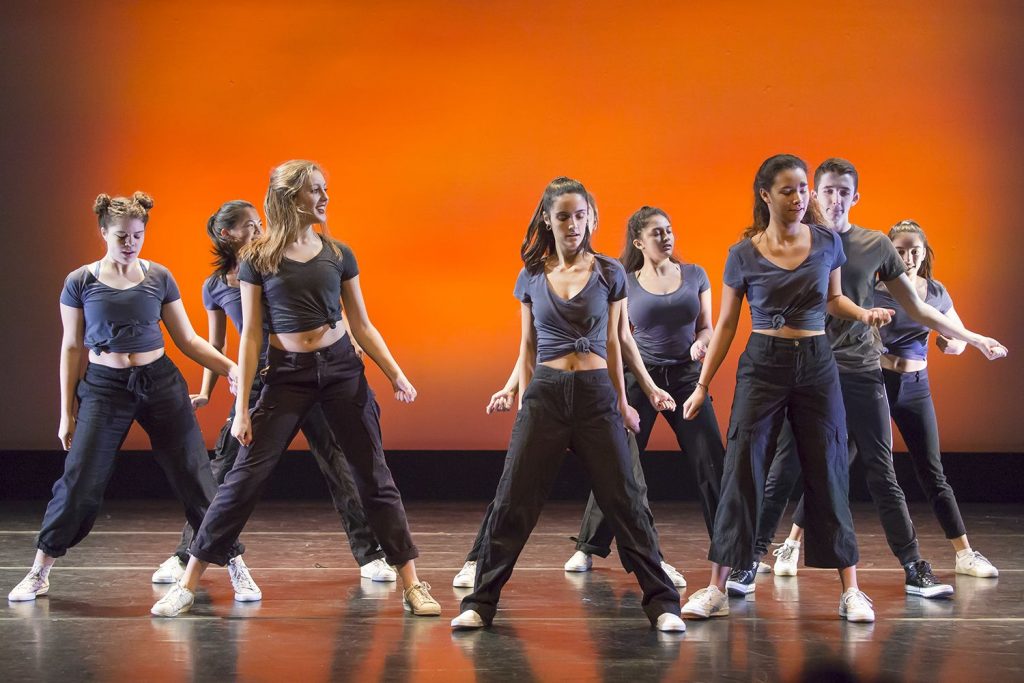How to dance the tango
Learn Basic Tango Steps
Tango, also referred to as the "Dance of Love", is a passionate and dramatic dance. It's a dialogue between partners, an expressive form of communication through movements.
- Basic steps
- Instructions & Diagrams
- Video
- Recommended Video Lessons »
Quick intro
Tango originated in the 19th century outskirts of Buenos Aires, Argentina. Since then it has grown into one of the most popular dances in the world.
It's somewhat different from other dances, especially traditional ballroom, but next in popularity behind waltz and foxtrot. Dissimilar to those two, it has no rise & fall, no swaying. It's known for quick, sharp movements and a catlike walking action.
Today, there are many styles of tango. You can dance the tango argentino, the ballroom tango, the finnish tango, the uruguayan tango, tango nuevo, vintage tango, and the chinese tango, among other styles. Although many different interpretations have appeared, the two main styles are the ballroom style and the Argentine style. The main difference between the two is that the second one has more sharp, staccato movements and the characteristic head snaps which are totally foreign for the dances coming from Argentine.
Tango is danced all around the world by people of all sizes and ages. Because the main requirement is walking, it is a dance for everyone. When it comes to Tango, the Zimbabwean proverb - If you can walk, you can dance – is absolutely on the spot.
Basic steps
Tango is a walking dance, meaning that all the steps are based on walking.
When you start learning it, you must first master some basic movements. Don't worry, basic steps are not that difficult to learn. Beginners usually start with 8-Count Basic or simply Tango Basic.
Tango Basic is made of five steps taken to 8 counts of music. The rhythm is slow, slow, quick, quick, slow.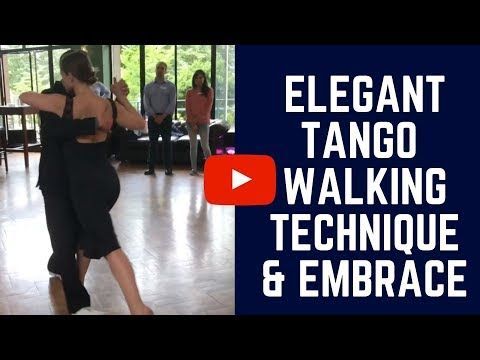 The slow steps consume two beats of music and the quick steps one. Tango music is usually written in 4/4 time (but also in 2/4 time) and played at a tempo of 30-33 measures per minute.
The slow steps consume two beats of music and the quick steps one. Tango music is usually written in 4/4 time (but also in 2/4 time) and played at a tempo of 30-33 measures per minute.
Instructions & Diagrams:
Tango is danced in a closed position, usually closer than in other dances. The man's left hand is holding the lady's right hand. His right hand is placed on her back, along the bottom of her ribcage. The lady's left hand is placed on his right shoulder. You always bent your knees. Remember, this dance is the most bent of all the ballroom dances.
The lead and follow mirror each others steps. The lead begins with the left foot, the follow with the right. Walks usually curve gradually to the left.
Basic Steps for Men
- Step forward with your left foot
- Step forward with your right foot passing the left foot
- Step forward again with your left foot this time passing the right foot
- Step forward and to the right with your right foot
- Left foot close to right foot
Basic Steps for Women
- Step back with your right foot
- Step back with your left foot passing the right foot
- Step back again with your right foot this time passing the left foot
- Step back and to the left with your left foot
- Right foot close to left foot
Video
In the following video Leon and Kim will show you slowly and from all angles how it's done.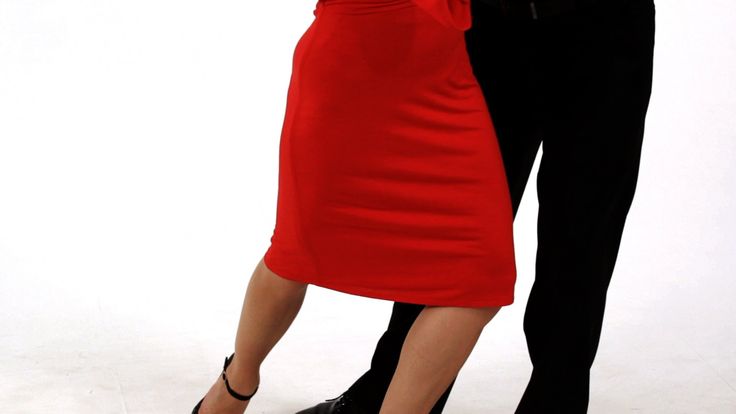 Ready, bend your knees, go:
Ready, bend your knees, go:
more videos »
If you found this lesson useful, you can find more of what we recommend here »
5 Argentine Tango Steps for Beginners — Ultimate Tango School of Dance
Tango has a rich history and background, originating in the late 19th century in the streets of Buenos Aires, Argentina, and Montevideo, Uruguay. It lets couples express their emotions through the fluidity of unique movements, setting it apart from other dances with a music style of its own.
When embarking on a journey, it’s often the first few steps that are the most important.
Like studying a new language, the best way to learn the Argentine Tango is to start with the basics and work your way from there.
It can seem daunting, but you’ll be surprised how mastering these 5 Argentine Tango steps will have you dancing in the right direction.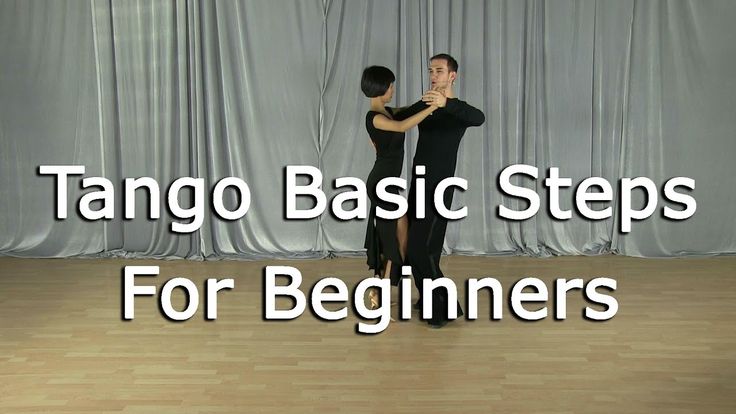
Tango instructors Diego Blanco and Ana Padron of Howcast executing a forward ocho.
First on our list is the Ocho, Spanish for "eight.” This is one of the oldest and most important basic figures in Argentine Tango. Tango was originally danced outdoors or in tango bars, where the ocho, but what appears to be an infinity sign, is drawn on the dusty floors by a couple facing each other, with one step in one way and the other step in the opposite.
There are many types of ochos, or figure eights, that may be led several ways,
as long as the knees remain soft and no unnecessary movements are made. These are the most common ochos with short descriptions from MasTango and Argentine Tango Lab:
Ocho adelante/defrente (forward/front ocho): Feet tracing a figure “eight” on the floor by the follower’s feet when she walks forward.
Ocho atrás (back ocho): Feet tracing a figure “eight” on the floor by the follower’s feet when she walks back.
Ocho cortado (cut ocho/cut eight): Change of direction: Occurs when a forward cross within molinete or an ocho-like movement is stopped and sent back upon itself. Typical in social-style tango where many such ‘brakes’ or ‘cuts’ are used to avoid collisions. Describes a movement done on either foot, pivoting forward or backward, and going either left or right.
Ocho milonguero (non-pivot ocho/lazy ocho): Ochos led and followed without substantial torso and hip pivoting.
Ochos en Espejo (Ochos in the mirror): The leader and the follower execute forward or back ochos simultaneously, mirroring each other's movement.
For beginners, it is suggested to learn the forward ocho first, as it is incorporated into a variety of other figures. This is a simplified outline of the steps in the Forward Ocho from the Traverse City Tango Club’s notes:
The Forward Ocho consists of a front cross step (follower steps between and perpendicular to the line between the partners), followed by a half-turn pivot to repeat a front cross with the other foot in the opposite direction. The important thing to notice here is that one needs a combination of TWO crosses to create ONE ocho!
The important thing to notice here is that one needs a combination of TWO crosses to create ONE ocho!
A front cross like the Ocho Adelante can be initiated from almost anywhere. But the two common starting points for beginners who are learning Argentine Tango are from the Cross (step 5 in the Basic Eight) and from step 2 in the Basic Eight.
To exit from the front Ocho, the easiest way is to stop one of the pivots at a quarter turn. This is to come into the position where the follower is facing the leader.
Giro/MolineteHear Anita’s explanations walking us through a Molinete.
Giro (pronounced "hero"), Spanish meaning turn, is also known as the Grapevine because it resembles a chain of steps strung together by the leader and follower. It is also called Molinete, which translates to "windmill" in English, since, like a windmill has four wings that turn one way or the other and change direction with the change of the wind, this figure has four steps wherein the pattern travels in one direction, continuously repeating the same four steps in the same order until.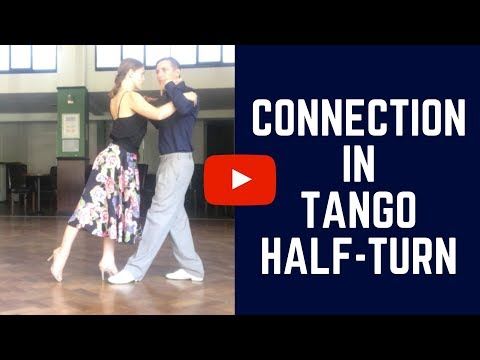 .. the wind changes it. I mean, the leader changes it.
.. the wind changes it. I mean, the leader changes it.
The molinete can be danced in a circle or in a line, but the principles and the mantra-like repetition of four steps remain the same.
It starts with a combination of side steps, back steps, side steps, forward steps, side steps, back steps, side steps, and so on. It is, however, more than just a set of steps to be memorized. It is a vital technique for improvising spins, pivots, and maneuvers on the dance floor, and is arguably the richest figure in Argentine Tango due to its various modifications.
As explained by Tango Principles, the molinete can also be "straightened out" and used for corridas (runs). The most common timing of the molinette is the slow-quick-quick-slow for the slow back cross, quick side step, quick front cross, followed by a slow side step.
Another way of looking at it is that the side step that follows the back cross is the only step in the sequence that falls on either 2 or 4 in the music.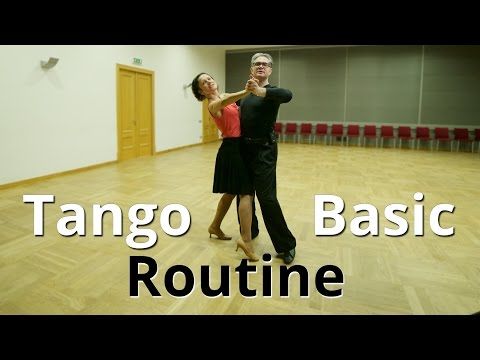 Everything else is either 1 or 3. But the molinete can also be done with a slower timing – all on the 1’s and the 3’s – or with a faster timing – on the 1-2-3-4-1-2-3-4, etc. A clear lead is required for both of these, for by default most women will do the quick-quick-slow.
Everything else is either 1 or 3. But the molinete can also be done with a slower timing – all on the 1’s and the 3’s – or with a faster timing – on the 1-2-3-4-1-2-3-4, etc. A clear lead is required for both of these, for by default most women will do the quick-quick-slow.
Third, we have the fun-loving sacada, from the Spanish word "sacar," which means "to take out" or "to take away."
Also known as a displacement, it is a distinctive foot and leg play seen in tango but not in any, other dances.
Sacada has many variations, but it's best to learn the simple sacada forward before progressing to back sacadas. It’s usually done to follower's front cross or sidestep when one partner (usually the leader) seemingly pushes the partner's unweighted leg out of its original position by merely pretending to touch, push, or kick it to immediately take that void with a quick transition of weight and light touch to the foot, thigh, or calf, but never with the ankle or knee.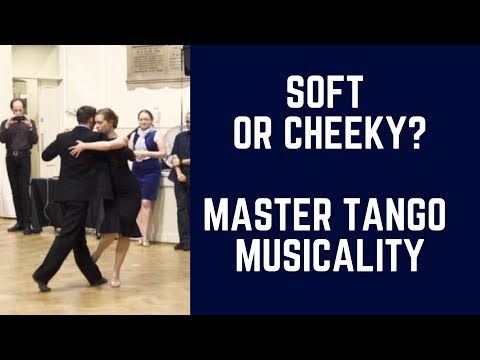
Below, Planet Tango elaborates on the 3 types of Sacada, but there is more and we described it HERE
A Front Sacada
A typical front sacada can take place [in] her forward motion, entering in parallel or crossed-leg fashion, that he may enter with either his right or left leg.
In the illustration, the position of the legs follows the alignment of the upper torsos in Body Position 6, that is, her right breast is lined up with the center of his chest so the shoulders are at an approximate 45 degree angle to each other.
As he marks a forward step, he receives her motion with his right foot reaching past the front of her left shoe, touching the floor mostly with the inner edge of his shoe. Her weight is evenly distributed between both legs, so she is in the middle. His weight is also evenly distributed, so he is also in the middle.
To execute the displacement, he transfers his weight forward to his right foot, bringing his body forward as he begins to rotate his torso to his right. The resulting effect is that the motion of his body forward and the rotation of his torso, provokes a transfer of her weight to her front leg, a rotation of her torso to the right over her right leg, and a displacement of her left leg as his right leg occupies the space that her left leg was occupying.
The resulting effect is that the motion of his body forward and the rotation of his torso, provokes a transfer of her weight to her front leg, a rotation of her torso to the right over her right leg, and a displacement of her left leg as his right leg occupies the space that her left leg was occupying.
Side Sacada
A typical side sacada opportunity occurs when the bodies are aligned in Body Position 8, both shoulders in line facing in the same direction.
The man receives the forward step of the lady with the opposite leg. That is, if she is moving forward with her left, he creates the displacement with his right.
Back Sacada
To execute a back sacada, he needs to position himself in such a way that he steps back into the direction in which she is traveling.
This will require a double step action so his support leg will travel with her opening leg and as she sets foot on the ground, he backs into her path with his free leg.
Once his metatarsus [is set] firmly on the ground, he elongates his calf to allow his heel to settle down on the floor bringing his body over and producing contact with her leg and displacing her body.
When she receives a sacada, she should be already on both legs with her body in the middle. As his body crosses her path and displaces her body, she needs to stay vertical and balanced on her support leg because a sacada will always provoke a rotation of her body over her support leg. Please, refrain from swinging the displaced leg like a scythe.
If executed gracefully, a sacada becomes the highlight of the dance; nevertheless, since it needs precise movement, it is one of the most difficult figures to teach, learn, and understand. When a dancer becomes overly focused on completing the sacada, the dancers risk injury and the beauty of the dance fades.
PasadaEndre Tango suggested that if you are receiving a sacada, be mindful of the timing and remove your leg a little later from where your partner placed it, rather than too soon. During the motion, think about stretching your leg and making space for your partner’s foot rather than about taking away yours. Once you do, remove your leg, then execute with a relaxed, bent knee.
In this way, one can avoid getting caught like a hook in each other’s feet.
Jenny & RicardoOria explaining a pasada
Improvisation is one of the best parts of a tango, and one figure that makes a sequence more exciting is when (usually) the leader performs a parada (or "stop") with his foot, leading the follower to turn sideways and elegantly step over the lead's extended leg, which is placed next to her standing leg, in the fourth move on our list, the "pasada."
A very unique figure in tango. Pasada literally translates to "stepping over" or "passing over", and it requires a deep connection between the partners to perform it successfully as it is a chance offered by the leader to the follower to add her own spice to the dance without force. It is frequently performed towards the end of a molinete or a mordida that leads into a forward ocho or barrida.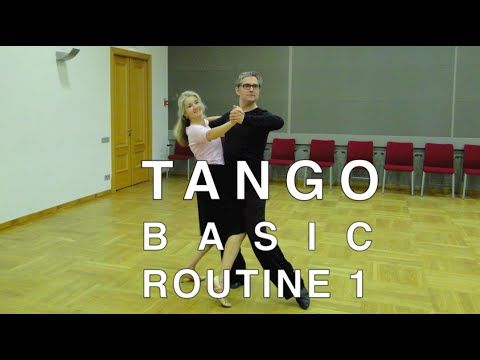
According to Tango Student,, there are three options for the pasada.
(1) Step over it regularly.
(2) Rhythmic Step: Follower takes a little 2" step back with the free leg, then a side step that clears the front of Leader's foot by an inch or two, opening up a channel for her to step through forward with her free leg (in this pasada, the Follower's step around lands in exactly the same place as if she passed over regularly -- i.e., close and around Leader). The timing of this pasada option is QQS.
(3) Big fan where Follower's foot fans out to touch the back of Leader's back foot.
All of these pasada options can be combined.
The leader shall lead the passada and not wait for the follower to do it.
However, there is a slight, though quite meaningful difference between passively waiting and giving the Follower space to fill up with her adornos.
Depending on the follower’s preferences she can do variations such as lustrada; she can raise her leg high or keep it low while passing over; done by the lead with his foot while the follower moves forward, passing over his foot and allows the follower to create an adorno.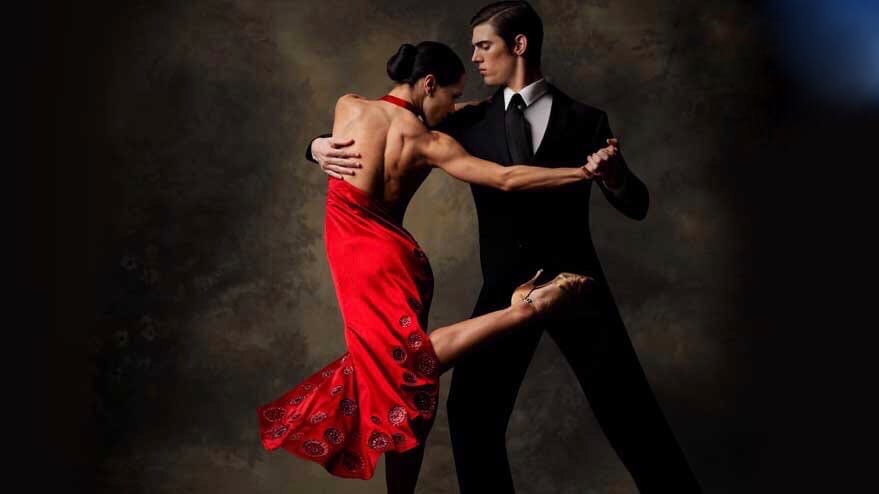
SanguchitoRemember though that those kinds of adornments shall not be done mechanically. Just like in life brushing against someone esle’s body - can be read for what it is - brushing again someone’s body. So use it when you mean it, not just because you think of it as a step.
Miriam Larici & Leonardo Barrionuevo demonstrate how to do the Sandwich
Last but not least, is the Sanguchito, which is referred to by so many names, such as Sandwich or Bite in English, or El Sandwich, El Sandwichito, El Sanguche, Mordita or Mordita (mor-DEE-tah is Spanish for tiny bite, or to clutch.)
A funny story associated with the origin of the name of this step, as written by Tango Argentino Rioplatnse, is that a milonguero who, during a tango party, "wedged" his partner's foot between his own feet, stopped the dance for a moment to take a sandwich out of his pocket, took a big bite (mordida) and shortly afterwards, resumed the dance!
There are several variations for Sanguchito and the most common sandwich sequence as per Tango Notes is:
Starting from back ochos.
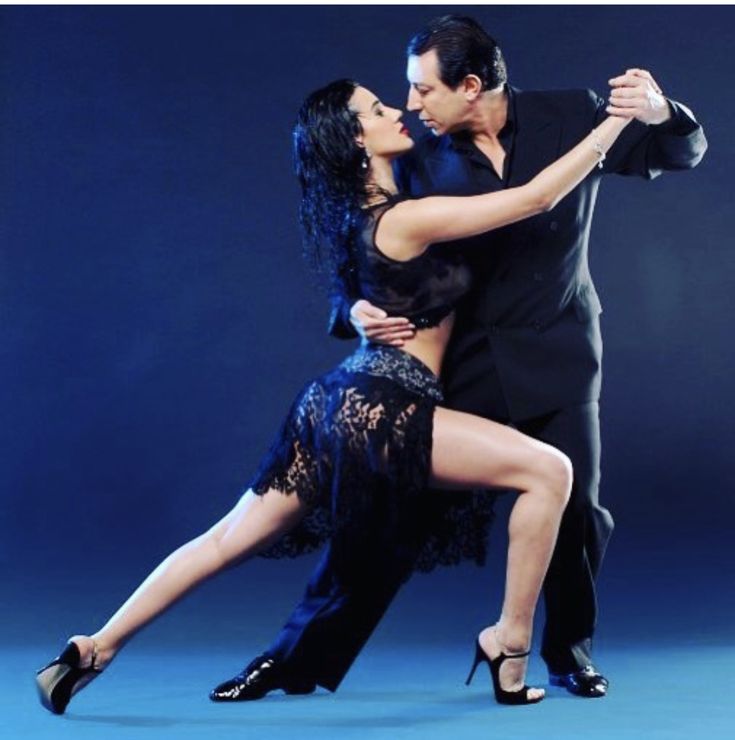
Leader's right foot paradas the outside of the follower's left foot.
Leader's left foot sandwiches the follower's left foot.
Leader's right foot crosses behind their left.
The follower's right is led to a stepover/pasada.
Learning Argentine Tango is not as difficult as it looks. It's like immersing oneself in an unfamiliar language one likes to learn nonetheless. To overcome language barriers, one should learn the complexity of language AND the culture of where it originates from.
When experienced dancers learn these steps by body and mind, it quickly becomes second nature to them, much like a second or third language. Inexperienced dancers, however, must first overcome ‘language’ barriers by letting go of their preconceived notions of Argentine Tango and immersing themselves in the dance.
True to human nature, words, whether written or spoken, regardless of the language they are in, with all of their complex meanings, are preserved in our minds.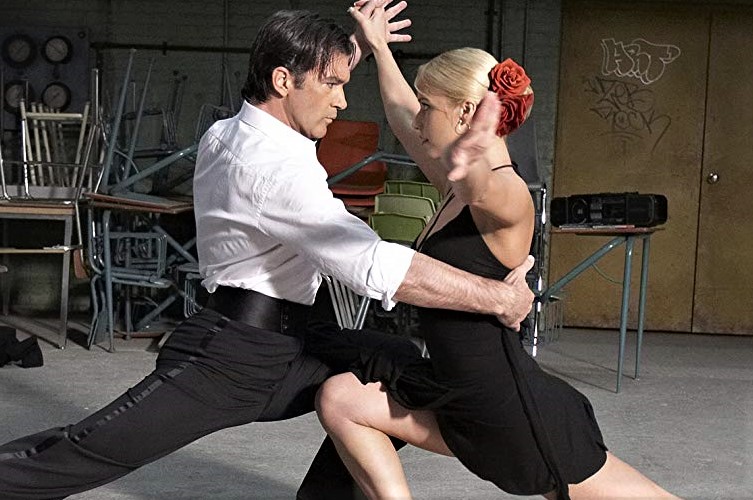 The analytical part of the mind requires the application of science. It focuses on what one sees, hears, touches, smells, and tastes. Intuition, on the other hand, might be disregarded as irrelevant, trivial, and even unscientific. It is the ability to think outside the box wherein no one can explain why one knows things that were not perceived as having existed in the first place.
The analytical part of the mind requires the application of science. It focuses on what one sees, hears, touches, smells, and tastes. Intuition, on the other hand, might be disregarded as irrelevant, trivial, and even unscientific. It is the ability to think outside the box wherein no one can explain why one knows things that were not perceived as having existed in the first place.
For this dance to be practiced and mastered, dancers must use their intuition and creative thinking to anticipate and coordinate their movements.
Tango reflects the fluidity of a person's mind—their thoughts, emotions, and abilities to understand and express themselves. The swaying represents humans' natural ability to communicate without using words or writing. The colgadas and volcadas performed off-axis, though still controlled, appear to be in a free fall because of their mastered communication, trust, and grace.
The Argentine Tango is a stress-relieving style of self-expression that allows dancers to let go of the rigidity inherent in scientific techniques and methodologies while uncovering their own creativity.
Tango relies quite a lot on scientific or mathematical techniques but also takes a desire to let one’s natural instinct be in control, which is innate and embedded in everyone’s subconscious since birth.
Argentine Tango is like a puzzle that gets put together differently each time. With so many ways to dance it, some tango dancers overdo it, adding more elements than it really needs. The beauty in Tango, In truth, lies in its outer simplicity and inner complexity.
After mastering the art of intuition and creative thinking, along with these five basic steps, all else will depend on the chemistry with a person you never knew existed, at least not until they begin to dance, which transcends any written and spoken languages.
Learn about Argentine Tango
Signup to get our most current articles, info about classes and events, and special deals!
Argentine Tango, Beginner Tango, Tango Knowledge, Tango performance, Tips for dancingAnita Flejtertango music, tango musicality, la cumparsita
0 Likestechniques, basic steps and movements for beginners
Contents
Tango is one of those things that can be mastered at any age.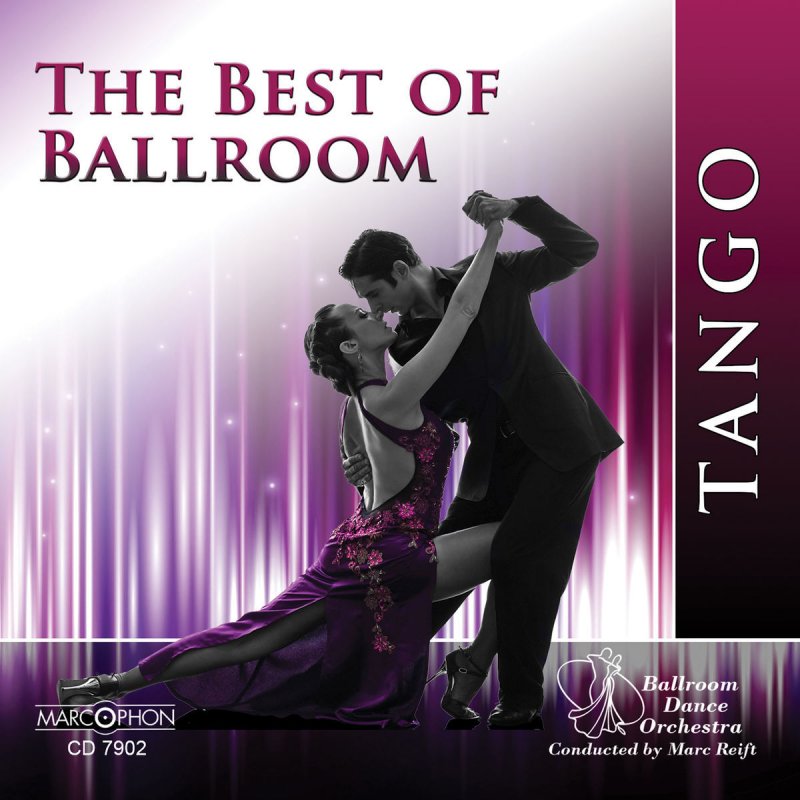 It is not so much the technical elements that are important here, but the emotions of the performers, their energy and ability to improvise. In the northern capital, tango is especially loved: milongas are regularly held in St. Petersburg - dance parties at professional venues and just in the open air. To help you plunge into the world of Argentinean passions and master one of the most spectacular directions, professional mentors of the La Boca dance club are ready.
It is not so much the technical elements that are important here, but the emotions of the performers, their energy and ability to improvise. In the northern capital, tango is especially loved: milongas are regularly held in St. Petersburg - dance parties at professional venues and just in the open air. To help you plunge into the world of Argentinean passions and master one of the most spectacular directions, professional mentors of the La Boca dance club are ready.
A few words about tango
A playful pair dance that is distinguished by its free composition, but at the same time a very clear rhythm. Tango is a popular Argentinean direction that "ripened" at home, and then conquered the whole world. The main thing in this dance is to be able to improvise without losing the rhythm, and to feel your partner. It is in the pair that the individual style of the performers is developed, their own decorations and unique combinations of movements are born. Professional tango performers say that in the first place is the fusion of hearts, and only in the second place is technique.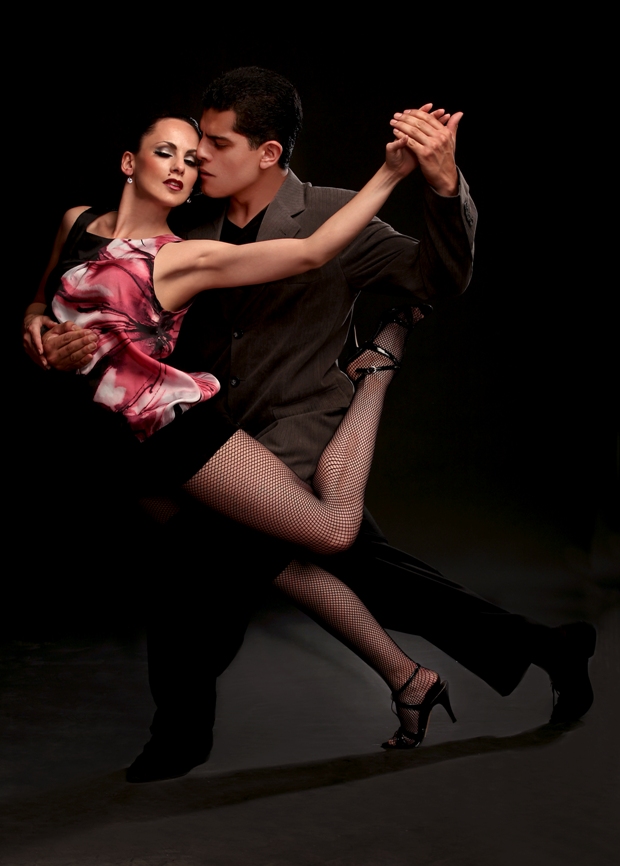 No one ever knows how the dance will turn out in the end, and this is its unconditional dignity!
No one ever knows how the dance will turn out in the end, and this is its unconditional dignity!
Sign up for a trial lesson
Basic tango moves
Due to the fact that tango is suitable for all ages and any physical form, you can start mastering this direction at home. Even before practicing the elements in front of the mirror, you need to really feel the tango music, listen to different pieces and try to swing to them. If you originally started dancing with a partner, learn how to hug in the tango style:
- A man grabs a woman, placing his right hand on her back - just below the shoulder blades.
- The partner's right hand is placed on the partner's left hand.
- The woman also clasps the man with her left hand - the hand is located in the middle of his back.
In tango, it is important to move, mirroring each other. It is optimal to achieve such unity at home, by the mirror.
How to dance tango correctly
Learning tango with the help of a tutorial is very difficult: step by step videos describe the movements, but not the general mood of the dance.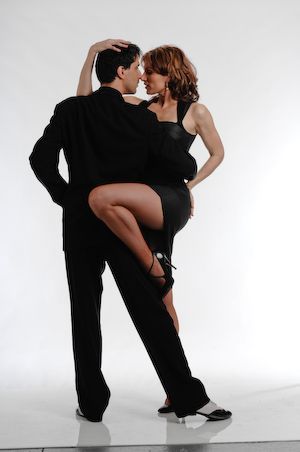 You can learn to improvise only by regularly practicing in a circle of like-minded people, so you should contact a dance school. To perform tango beautifully and excitingly you will be taught by an experienced mentor.
You can learn to improvise only by regularly practicing in a circle of like-minded people, so you should contact a dance school. To perform tango beautifully and excitingly you will be taught by an experienced mentor.
Here are a few things to keep in mind during class:
- Learn to keep your posture, and not only while dancing: a slightly raised head, straightened shoulders and a straight back always look good;
- The traditional tango rhythm is "slow, slow, fast, fast, slow". It's worth remembering;
- To develop your individual style, dance with different partners, and then choose one - the one with whom it is best to move in unison.
Video: performance of tango teachers of our school
Four ways to learn tango, or how to choose your own path? / Argentine tango school El Gato Tango
All advanced tangueros have their own training recipe in stock tango, which they often zealously promote.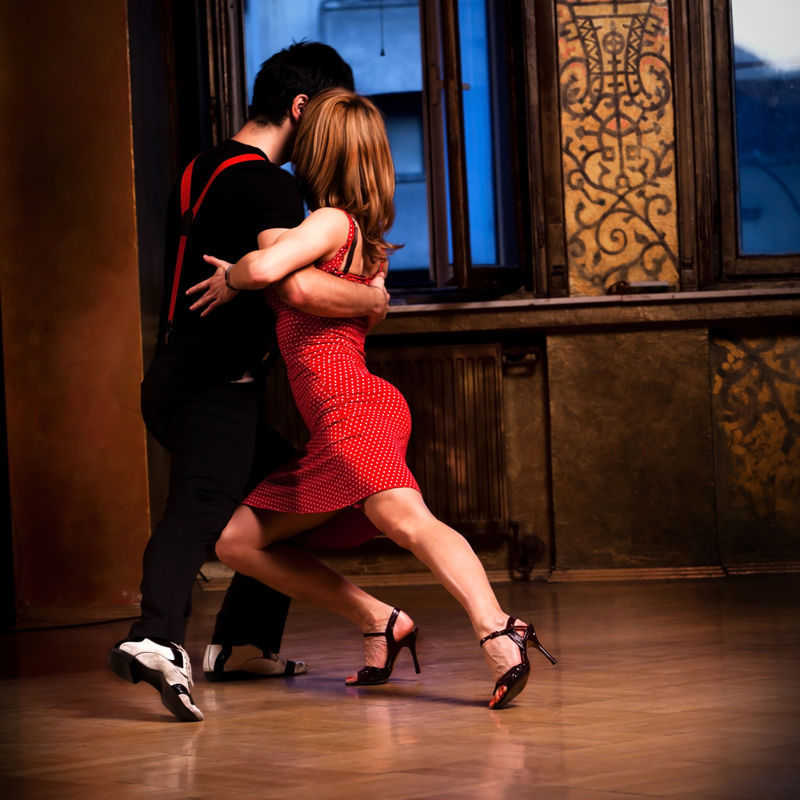 "Basic Enough course!”, “Only private traders!”, “Yes, why go to school at all, at milongas everything learn!" Of course, every opinion has the right to exist, but if honestly, the chosen strategy of a single tangero is very clearly imprinted on the manner of his dancing and ensures his future "jambs".
"Basic Enough course!”, “Only private traders!”, “Yes, why go to school at all, at milongas everything learn!" Of course, every opinion has the right to exist, but if honestly, the chosen strategy of a single tangero is very clearly imprinted on the manner of his dancing and ensures his future "jambs".
So how is it right? Which is better, group lessons or private, local or Argentinian teachers, practitioners or milongas? Come on, we will we will sort it out, and you will choose for yourself.
Group lessons
Have you heard the phrase “tango is a social dance”? In fact, this means that you knowing how to dance, you can invite (of course, with a glance) and have a great time time on the dance floor with any partner or partner, even if you are in foreign country and do not have a common language. A common language will successfully replace tango for you. And therefore group lessons - classes in "society" will give you the ability to hear, understand, feel different people. And this is the cornerstone, the alphabet and bread in Maslow's tango pyramid.
And this is the cornerstone, the alphabet and bread in Maslow's tango pyramid.
How long does it take to attend group classes?
Yes, as much as you like. Just don't forget that at a certain stage tango-growing up, group lessons alone are not enough and are required introduce "complementary foods": private traders, group lessons with other teachers, practices, and of course milongas!
Group lessons often become addictive. For many the tango school becomes a cozy home, and I don’t want to recognize myself at all "adults", to leave the comfort zone under the cross glances of strangers at general milongas. But, in fact, it is tango parties that are the goal of your tango learning. And believe me, their atmosphere is worth it to defeat fear.
Should I change schools and try group lessons from different teachers?
The personality of the teacher and your contact with him is certainly important, by all 147%. Therefore, if you feel that the teacher/s are "not your/s", then yes, you should try another pair.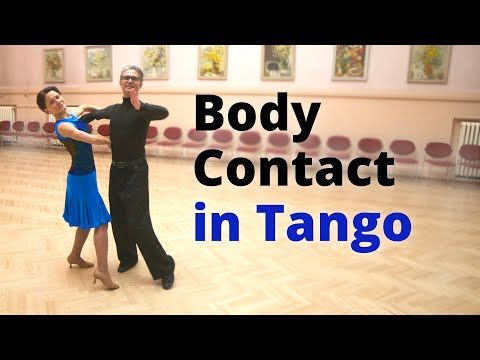 If you like the lessons and you feel progress, my sincere advice is don't change schools and teachers at least until the end of basic course. Otherwise, you risk getting confused in terminology, in music, in feet, and disentangling this stew of other people's ideas will not be very easy. Ongoing and advanced stage, be curious and ask other maestros to take a look at you with a fresh look is not only not harmful, but also very good.
If you like the lessons and you feel progress, my sincere advice is don't change schools and teachers at least until the end of basic course. Otherwise, you risk getting confused in terminology, in music, in feet, and disentangling this stew of other people's ideas will not be very easy. Ongoing and advanced stage, be curious and ask other maestros to take a look at you with a fresh look is not only not harmful, but also very good.
Private lessons
You embrace a real guru. And the guru gives you 60 minutes of his time, everything, to the second. You do not need to stagnate with other beginners, do not need to wait patiently or impatiently for the teacher to explain the obvious things to another pair and will suit you. Sounds nice? Handsomely. But private employment has its big disadvantages.
If at the initial stage you limit your education exclusively to private students, you run the risk of “castrating” his sociality with such images. you will be fine know how to dance with one person, good level.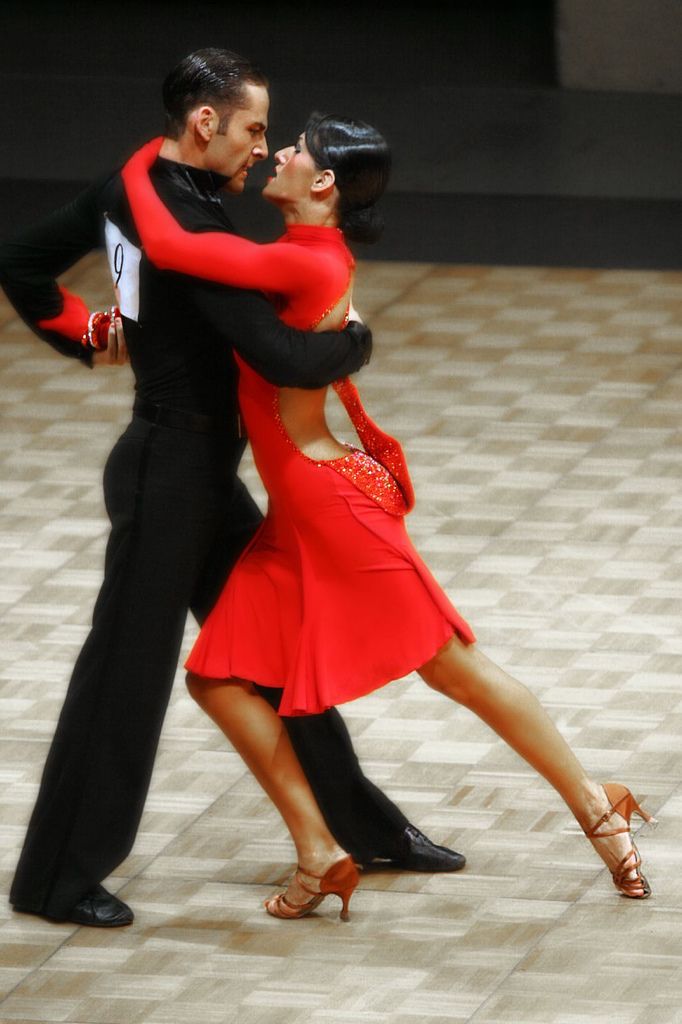 But even the coolest the teacher speaks tango with his own accent. And "going out into the people", on big milonga (where, by the way, you don't know anyone, because you didn't study in group), you run the risk of not having fun and not even understanding the other person. Not because he is bad. But simply because he is ... different.
But even the coolest the teacher speaks tango with his own accent. And "going out into the people", on big milonga (where, by the way, you don't know anyone, because you didn't study in group), you run the risk of not having fun and not even understanding the other person. Not because he is bad. But simply because he is ... different.
When should I start private lessons?
After the basic course, at any stage when you feel the need. For the first year and a half or two, the main dish is still worth leaving the groups, and taking private traders for dessert. And only then, after you launched into independent swimming in milongas, private traders can independently successfully maintain and improve your level.
Private traders with Argentines
Moscow already has a whole settlement of Argentines who came here for permanent residence. Finding a teacher among them is not a problem at all. And most likely to anyone it is interesting for a beginner to try out the “real Argentine hug” for himself. Not feel free to try! But also, better after the basic course. Otherwise, you are unlikely feel the difference. (And how much a man who has never tasted wine, will be comfortable in the role of a wine festival taster).
Not feel free to try! But also, better after the basic course. Otherwise, you are unlikely feel the difference. (And how much a man who has never tasted wine, will be comfortable in the role of a wine festival taster).
Practices
Practices differ between practices. So, for example, school moderated practices great addition to group classes. On the one hand, they are quite plausible imitate the atmosphere of a milonga, and on the other hand, take place without interruption from training. AT at any time you can ask a question to the teacher or your partner and do the work over mistakes.
The further the tangero goes into the wilds of tango, the longer he (she) does, what more often he goes to milongas, the more he gains self-confidence. And all the more necessary, but the more terrible it is to receive feedback from your partner. Here comes the time private practices: tete-a-tete with a partner or partner whom you yourself choose whom you trust, whom you respect, and whose opinion you are not afraid of hear.
When should I start practicing and when should I stop?
It's simple - it's always worth practicing, whether you have a tango month or tango decade.
Milongas
real "adult" social tango. It is at the milongas that you study conform to their gender model, dress nicely, behave with dignity (both agreeing and refusing), to carefully establish social ties and dance with a variety of people, sometimes complete strangers.
It is not customary in milongas to give advice and teach, and even more so, having heard any criticism, you have every right to "imprison" your partner. But not forget that they are looking at you: how you sit, stand, hold on, speak, go hug. Therefore, go to the milonga without going through the group class and "paddling pool" of school practices, the lot of the most daring. At zero base preparation, your social tango life will end before it begins.
Total
An ideal recipe for learning tango in the author's opinion:
- Group classes: the first one and a half to two years.

